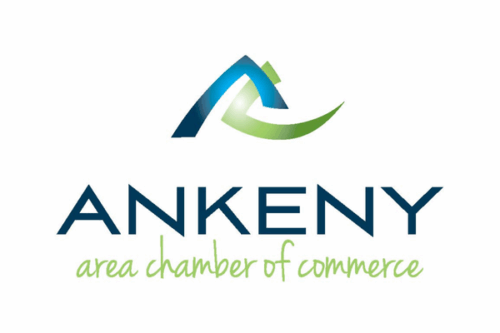Did you know that in 2023, 44% of corporate marketers increased their sponsorship budgets, with a significant number raising their spend by over 40%? This growing trend highlights the increasing importance of corporate sponsorships in both the business and nonprofit sectors. If you’re part of a nonprofit looking to widen your reach, or a business seeking to boost your community engagement, getting a handle on corporate sponsorships is essential. MemberClicks provides a practical solution for managing these vital partnerships.
This guide will walk you through the essentials of corporate sponsorships, including how they work, their benefits, and best practices for success. Let’s dive in and explore how to make the most of these partnerships.
The Essence of Corporate Sponsorship
Corporate sponsorship is more than just a funding tool; it’s a strategic partnership. When a company sponsors an organization, event, or initiative, they’re not just giving money. They’re aligning their brand with something they believe in. This can range from sponsoring local charity events to supporting major sports teams or cultural institutions. It’s a way for businesses to show they care about the same things their customers do, building a deeper connection with their audience.
Types of Corporate Sponsorships
There are several types of sponsorships, each serving different purposes:
- Event Sponsorship: Companies provide funding for events in exchange for brand exposure.
- Cause-Related Sponsorship: Focused on social or environmental causes, this type builds a company’s image as socially responsible.
- In-Kind Sponsorship: Instead of money, companies provide goods or services.
- Media Sponsorship: Companies support media coverage for events or campaigns, gaining exposure through these channels.
- Academic or Educational Sponsorship: Businesses support educational programs or institutions, aligning with future talent and innovation.
Benefits of Corporate Sponsorships
Corporate sponsorships offer various advantages to both the sponsoring business and the recipient organization. These sponsorships lead to positive outcomes for both the sponsor and the recipient, supporting their goals and missions.
For the Sponsored Party
For nonprofits or entities seeking sponsorship, the benefits go beyond financial support. They gain exposure, access to new networks, and sometimes, expert advice from their sponsors. This can be invaluable for growth, helping them reach wider audiences and achieve their goals more effectively.
For the Sponsoring Company
For businesses, sponsorship is a powerful marketing tool. It enhances brand visibility and reputation, connects them with specific audiences, and demonstrates their commitment to causes or communities. This can lead to increased customer loyalty and brand affinity, as people often prefer to buy from companies that share their values.
Maximizing Sponsorship Opportunities
To make the most out of corporate sponsorships, both parties need to understand and align their objectives. For the entity seeking sponsorship, it’s about presenting a compelling case that resonates with the sponsor’s values and goals. For businesses, it’s selecting the right opportunities that reflect their brand identity and can provide a return on investment.
How to Attract Corporate Sponsorships
When you’re aiming to attract corporate sponsorships, it’s all about understanding what businesses are looking for and how your organization aligns with their goals. Think of it as a partnership where both sides need to see value. Here’s how to position yourself to be an attractive partner for corporate sponsors.
Understanding Your Unique Value Proposition
Before reaching out to potential sponsors, know what makes your organization special. What do you offer that aligns with a sponsor’s interests? It could be your reach in the community, the demographic of your audience, or the unique impact of your work. Be clear about what sets you apart and why a company would benefit from associating with you.
Tailoring Your Approach
No two businesses are the same, so your approach shouldn’t be one-size-fits-all. Research potential sponsors to understand their corporate values, marketing goals, and previous sponsorship endeavors. This knowledge allows you to tailor your proposal to align with their objectives, increasing your chances of success.
Creating a Compelling Sponsorship Proposal
A great sponsorship proposal is the cornerstone of attracting corporate sponsorships. This document should clearly communicate the benefits for the sponsor while showcasing your organization’s value.
Key Components of an Effective Proposal
Your proposal should include:
- A clear description of your organization and its mission.
- Detailed information about the event or project needing sponsorship.
- The benefits for the sponsor, including specific metrics like audience reach or engagement.
- Levels of sponsorship with corresponding benefits.
- Success stories or case studies demonstrating past sponsorship successes.
Making Your Proposal Stand Out
To make your proposal memorable:
- Personalize it for each potential sponsor.
- Use compelling visuals and engaging narratives.
- Show a clear alignment between your values and the sponsor’s.
- Include creative ideas for how the sponsor can be involved or highlighted.
Remember, securing corporate sponsorships requires a mix of strategic planning, research, and creativity. By understanding your value and tailoring your approach and proposal, you can build partnerships that are beneficial and meaningful for both parties.
Building Effective Networks and Relationships
Securing corporate sponsorships often starts with building a strong network. It’s about who you know and who knows you. Engaging with the business community, attending industry events, and participating in relevant forums can put you on the radar of potential sponsors.
Networking Tips for Success
- Attend business and community events where potential sponsors are likely to be present.
- Leverage social media and digital platforms to connect with companies and industry leaders.
- Don’t just focus on what you need; think about how you can offer value to potential sponsors.
- Follow up on connections made at events with personalized messages or meetings.
The Role of Relationships in Sponsorship
Building relationships is about more than just making contacts. It’s about fostering trust and understanding mutual needs. When potential sponsors see the passion behind your work and understand how it aligns with their goals, they are more likely to invest.
Leveraging Digital Platforms for Sponsorship Success
In today’s digital age, embracing online platforms can significantly enhance your sponsorship strategy. Virtual events, in particular, offer unique opportunities for corporate sponsorships. They can reach wider audiences and provide innovative ways for sponsors to showcase their brand. Understanding how to effectively leverage these digital events is key to attracting modern sponsors.
As you adapt to the digital landscape, consider the potential of virtual events in your sponsorship strategy. For a deep dive into this topic, explore these Virtual Event Sponsorship Ideas to learn how to maximize the impact of your digital initiatives.
Effective Communication and Proposal Presentation
When it comes time to present your sponsorship proposal, clear and compelling communication is key. You need to articulate not only the value of your project but also how it aligns with the sponsor’s objectives.
Tips for a Successful Presentation
- Be clear and concise: Focus on key points and benefits.
- Tailor your presentation to the interests and values of the potential sponsor.
- Use data and success stories to back up your points.
- Practice your pitch to ensure confidence and clarity.
Navigating Sponsorship Negotiations
Negotiating a sponsorship deal is a delicate balance. You want to ensure that the benefits are mutually advantageous, without compromising your organization’s values or the sponsor’s expectations.
- Understand what you can offer and what you need in return.
- Be open to creative solutions that might appeal to the sponsor.
- Communicate clearly and be prepared to answer questions or provide additional information.
Securing corporate sponsorships is a journey of building relationships, effective communication, and strategic negotiations. By following these steps and staying true to your mission, you can forge valuable partnerships that benefit both your organization and your sponsors.
Maximizing and Maintaining Sponsorship Relationships
The key to a successful sponsorship is not just securing it, but also delivering on your promises. This means providing the agreed-upon benefits to the sponsor and ensuring that their goals are met.
Tips for Successful Sponsorship Execution
- Regularly communicate with your sponsor about the progress and impact of the sponsorship.
- Be transparent and proactive in addressing any challenges or changes.
- Deliver on all agreed-upon benefits, such as logo placements, acknowledgments, and access to events.
Measuring and Reporting Success
Tracking the success of the sponsorship and sharing these results with the sponsor is crucial. This might include metrics like audience reach, engagement rates, or media coverage.
Building Long-Term Sponsorship Relationships
The end goal should be to turn a one-time sponsorship into a long-term partnership. This requires ongoing engagement and demonstrating continued value.
Strategies for Long-Term Engagement
- Keep sponsors updated on your organization’s activities and successes.
- Invite them to events and involve them in relevant initiatives.
- Continuously seek feedback and look for ways to enhance the partnership.
Evolving with Your Sponsors
As your organization and your sponsors evolve, so should your partnerships. Be open to new ideas and ways to collaborate that align with changing goals and market dynamics.
Conclusion: Leveraging Corporate Sponsorships for Mutual Success
You now have a roadmap to navigate the world of corporate sponsorships. Remember, these partnerships are more than financial transactions; they’re opportunities to build meaningful connections and achieve shared goals. And as you embark on this journey, remember that tools like MemberClicks can be invaluable in managing and maximizing these relationships. So go ahead, explore the possibilities, and unlock the full potential of corporate sponsorships!
















